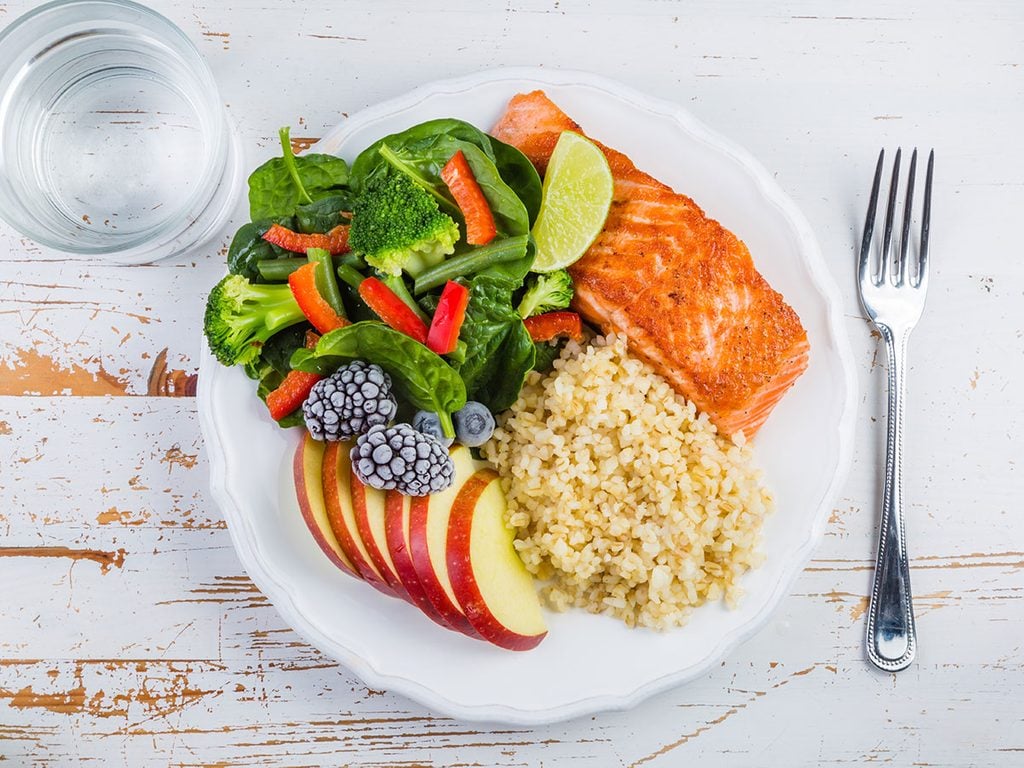Here’s What Healthy Food Portions Actually Look Like

Forget the measuring cups and spoons—the easiest portioning tool is in the palm of your hand, literally!
With supersize meals at fast-food and even sit-down restaurants, it can be hard to know exactly what a healthy portion size is really supposed to be. Good news! There’s an easy tool you can use to measure your food portions: your hand! Use this guide as a rule of thumb for portioning out your food.
And remember: It’s important to properly portion out all foods—even healthy foods—if you’re watching your waistline. There can be too much of a good thing. Instead, rely on these healthy foods that are sure to make you feel full so you don’t overeat.
Protein
The size of your palm is a good estimate for 3-4 ounces of protein, like meat, fish, poultry and tofu. (Vegetarian? Here are the best sources of plant protein.)
Vegetables
A closed fist is equivalent to about 1 cup or 8 fluid ounces. This can be used to measure one serving of vegetables, including broccoli, spinach or carrots, or 8 ounces of a beverage, like water or milk.
Carbs
Equivalent to about 1/2 cup (one serving), a cupped hand is perfect for measuring carbs, like grains, starches and fruits.
Fats
The size of your thumb is a good way to estimate portions of fats, like oils, butters and seeds. It’s equivalent to one tablespoon, so double it for a serving of peanut butter. Check out this list of high-fat foods you should be eating.
Snacks
Cup both hands together to measure out 1 ounce of snack foods, like chips, pretzels or one of these healthy snack options.
Ice Cream
One cupped hand is equivalent to a double serving of ice cream.
Of course, these aren’t hard-and-fast rules—everyone’s hands are different sizes and may be proportionally different to their bodies. But paying attention to portion sizes is important, and this is a great way to start.
Recommended Servings
Before you get into using your hand as a guide, you should know how many servings of each food group an adult needs. Here’s a look at the daily recommendations from Canada’s Food Guide. These ranges are for adults and can vary depending on gender and age.
- Fruits and Vegetables: 7–8 servings
- Grain Products: 6–8 servings
- Milk and Alternatives: 2–3 servings
- Meat and Alternatives: 2–3 servings
- Fats: 2–3 tablespoons
Next, learn if cheat meals are good or bad for weight loss.




